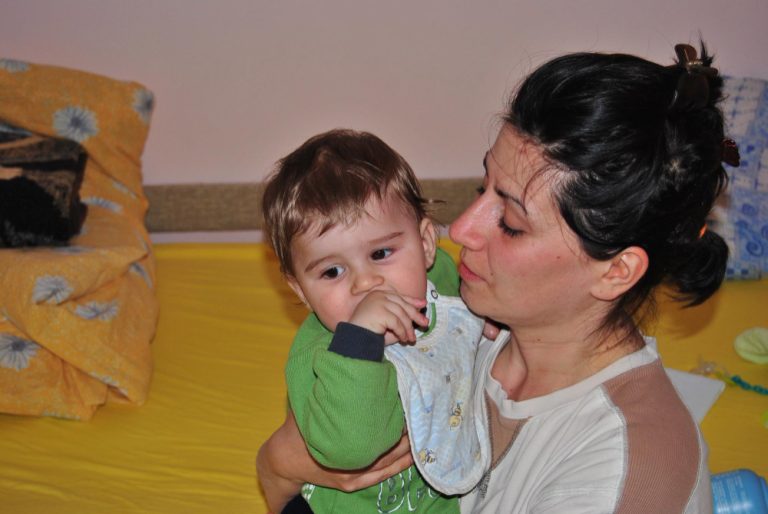When Do Babies Cluster Feed? Cluster Feeding Tips
Do you find yourself wondering, “When do babies cluster feed?” Are you a new parent feeling overwhelmed by your baby’s sudden and frequent feeding marathons? Does the thought of managing this phase leave you feeling anxious and unsure? Don’t worry, you’re not alone.
Cluster feeding is a common behavior seen in newborns that can leave parents feeling puzzled and seeking answers. But fear not, our comprehensive guide is here to help you unlock key insights and ease your worries.
In this guide, we will delve into the causes and benefits of cluster feeding, from recognizing hunger cues to ensuring a healthy milk supply. We will also offer expert advice on managing this phase effectively while nurturing your newborn’s development. Understanding the reasons behind cluster feeding is the first step towards feeling empowered as a parent.
So, when do babies cluster feed? Let us help you navigate the world of cluster feeding with ease. Whether you’re a new parent or a seasoned pro, this guide offers tips, insights, and strategies to support both you and your baby through this challenging yet rewarding journey.
What is Cluster Feeding?

Cluster feeding is a term used to describe a common pattern of frequent feedings that babies tend to engage in during certain periods, usually in the evening or nighttime. This is a normal and expected behavior in newborns and infants, and it plays a crucial role in their growth and development.
By cluster feeding, babies get more milk and nutrients, which helps increase their weight and build their immune systems. Additionally, it helps regulate the milk supply and stimulate milk production for the mother.
Why Do Newborns Cluster Feed?
During the initial days of a newborn’s life, they may exhibit cluster feeding behavior. This pattern of feeding involves frequent, shorter feeds with shorter breaks in between. There are various reasons behind cluster feeding, with one of the primary reasons being the baby’s increased hunger during growth spurts.
This type of feeding can help stimulate milk production in breastfeeding mothers, ensuring an adequate milk supply to meet the baby’s needs. Additionally, cluster feeding can provide comfort to babies who may be seeking closeness and reassurance during this crucial period of adjustment.
When Do Babies Cluster Feed?
During the first few weeks of a baby’s life, it’s common to observe cluster feeding, especially during growth spurts. This feeding pattern is typically seen around 1-3 weeks, 6-8 weeks, and approximately 3 months of age. It’s important to keep in mind that each baby is different, and their feeding patterns may vary.
How Should I Handle It if My Baby Wants to Cluster Feed During the Night?
Cluster feeding, a common pattern where a baby feeds more frequently during a certain period of the day or night, can be particularly challenging for parents, especially during the night. However, there are several strategies that parents can implement to manage nighttime cluster feeding and ensure both the baby and the parents get the rest they need.
- A relaxing bedtime routine, including activities such as a warm bath or a gentle massage, can help calm the baby and prepare them for sleep.
- Using soothing techniques like lullabies or white noise can also be effective in promoting relaxation.
- Additionally, ensuring a comfortable feeding environment with appropriate lighting, temperature, and positioning can help make the feeding process easier.
- Finally, taking turns with a partner or seeking the support of a relative or friend can allow parents to get the rest and self-care they need to manage nighttime cluster feeding effectively.
How Can I Tell the Difference Between a Baby Who Wants to Cluster Feed and a Fussy Baby?

Identifying the difference between cluster feeding and general fussiness in babies might be challenging sometimes. Cluster feeding is a feeding pattern characterized by frequent feeds in a short span of time, while fussiness in babies can be caused by various factors like gas, teething, or discomfort.
If you observe your baby’s hunger cues such as rooting, sucking on hands, or increased alertness, it can help you determine if the baby is genuinely hungry and wants cluster feeding.
Can Formula-Fed Babies Cluster Feed?
Cluster feeding is a common term used in the context of breastfeeding, but it’s not exclusive to breastfed babies. Formula-fed infants can also exhibit cluster-feeding behavior. The primary objective of cluster feeding is to fulfill the increased nutritional and developmental requirements of the baby. Although the frequency and duration of cluster feeding may differ between breastfed and formula-fed babies, the underlying purpose remains the same.
Do All Newborns Cluster Feed?
It is quite common for newborns to exhibit cluster feeding, a feeding pattern in which the baby feeds more frequently and for longer periods of time. However, it’s important to keep in mind that not all babies have the same cluster-feeding behavior.
Some newborns may have shorter cluster feeding sessions, while others may cluster feed more frequently and for longer stretches. It’s essential to recognize that each baby is unique, and their individual feeding behaviors may vary.
What if My Baby Wants to Cluster Feed, but I Need a Break?
When dealing with the constant demands of cluster feeding, it is crucial for parents to take breaks and prioritize their well-being.
- If you feel overwhelmed, it may be helpful to enlist the support of your partner, a family member, or a friend to take over some feedings.
- You can also consider pumping breast milk in advance or introducing occasional formula feeds as alternatives to provide yourself with some rest and self-care.
Remember, taking care of yourself is just as important as taking care of your little one.
Cluster Feeding: Understanding the Concept and Purpose

Cluster feeding is a common feeding pattern that newborn babies often engage in. During cluster feeding, your little one may want to nurse more frequently and for shorter durations than their usual feeding sessions. This behavior can sometimes occur in a series of short feeds in close succession, leaving parents feeling challenged and wondering if there’s a way to minimize or stop it.
Here are some important points to keep in mind:
- Cluster feeding helps stimulate your milk production.
- It ensures that your baby receives the necessary nutrition to support their rapid growth.
- Cluster feeding helps establish a strong bond between you and your little one.
- It provides comfort and reassurance during the transition to life outside the womb.
- Cluster feeding is a normal and temporary phase that typically occurs in the late afternoon or evening.
- It commonly coincides with growth spurts, which are periods when babies experience rapid physical and developmental changes.
While it may feel exhausting for parents, cluster feeding is a normal part of your baby’s feeding behavior and a positive sign that they are thriving.
Remember, it’s crucial to create a supportive environment for yourself during cluster feeding. Take breaks when needed, ask for help from your partner, friends, or family members, and prioritize self-care.
Reach out to your healthcare provider or lactation consultant if you have any concerns or questions about your baby’s feeding or if you need additional support during this phase. Stay patient and trust the process, as cluster feeding plays an essential role in your baby’s growth and nourishment.
Key Takeaways: Identifying And Managing Cluster Feeding
Understanding and effectively managing cluster feeding can help parents navigate this phase with confidence and ease. Here are the key points and takeaways to remember when it comes to identifying and managing cluster feeding:
1. Cluster feeding definition and purpose
Cluster feeding refers to a period when a baby feeds more frequently and for shorter durations within a condensed timeframe. It often occurs in the evening and can be a baby’s way of boosting their milk intake and stimulating a mother’s milk supply.
2. Cues for cluster feeding
Look out for hunger cues such as increased fussiness, rooting, sucking on hands, or lip smacking. Recognizing these signs can help differentiate between cluster feeding and general fussiness.
3. Duration and frequency
Cluster feeding episodes can last for several hours, with babies feeding every 10-30 minutes. Remember that cluster feeding is a temporary phase and will gradually lessen as your baby grows.
4. Promote a healthy milk supply
Cluster feeding helps stimulate your milk supply, so it’s vital to ensure you are well-nourished, hydrated, and practicing proper breastfeeding techniques. Seek support from a healthcare provider or lactation consultant if you have concerns about your milk supply.
5. Managing cluster feeding
Establish a comfortable feeding environment and use soothing techniques to help calm your baby. Take breaks when needed, ask for support from your partner or loved ones, and prioritize self-care to alleviate any stress or exhaustion.
6. Differentiating cluster feeding from other concerns
Understand the difference between cluster feeding and issues like colic or a fussy baby. If you have concerns about your baby’s feeding patterns, consult with your healthcare provider or a lactation specialist.
Remember, each baby is unique, and their feeding patterns may vary. Patience, support, and seeking guidance when needed are essential during this phase. Cluster feeding is a normal part of a baby’s development, and with time and understanding, you can navigate this period with confidence and care.
Cluster Feeding Schedule in Newborns: When Do Babies Cluster Feed?

Cluster feeding can be both exhausting and confusing for parents, especially when it comes to establishing a feeding schedule for their newborns. Understanding the concept of cluster feeding and its relationship to a baby’s growth and development can help alleviate concerns and provide a sense of reassurance.
Why Cluster Feeding Matters
Cluster feeding refers to a period when a newborn suddenly wants to nurse more frequently and for shorter durations. This behavior typically occurs in the late afternoon or evening and can extend into the night. Although it may seem overwhelming, cluster feeding is entirely normal and serves several important purposes.
Promoting Milk Supply and Growth
One of the primary reasons newborns engage in cluster feeding is to stimulate milk production. By nursing more frequently during these cluster feeding sessions, babies signal to the mother’s body to produce an increased milk supply to meet their growing needs. Moreover, cluster feeding supports a baby’s rapid growth and helps fulfill their nutritional requirements during growth spurts.
Establishing a Healthy Sleep-Wake Cycle
Cluster feeding can also play a role in establishing a healthy sleep-wake cycle for newborns. By feeding more frequently and consuming smaller quantities of milk, babies can meet their calorie needs and feel satisfied, potentially allowing for longer stretches of sleep at night.
Responding to Developmental Changes
During cluster feeding episodes, babies often exhibit increased wakefulness and activeness. This behavior is thought to coincide with periods of rapid development and brain maturation. As babies engage in cluster feeding, they may also be practicing new skills, such as coordinating sucking and swallowing or strengthening their feeding reflexes.
Navigating Cluster Feeding Challenges
To navigate cluster feeding successfully, it’s essential for parents to prioritize self-care. Taking breaks, leaning on a support system, and seeking help when needed can contribute to the overall well-being of both the parent and the baby. Remember, while cluster feeding can be demanding, it is a temporary phase that plays an important role in a baby’s growth and development.
By understanding the purpose and benefits of cluster feeding, parents can approach this phase with confidence and a sense of empowerment. Remember, if you have concerns about your baby’s feeding patterns or well-being, it’s always a good idea to consult with a healthcare provider or lactation consultant for further guidance.
In conclusion, cluster feeding is a normal and essential phase of a baby’s growth and development. If you’re wondering when do babies cluster feed, the answer is that it varies from baby to baby. However, it’s common for babies to cluster feed in the evening hours.
While this phase can be challenging for parents, implementing effective strategies and seeking advice from a healthcare professional or lactation consultant can help make it manageable. Remember, each baby is unique, so trust your instincts and do what works best for you and your little one.







